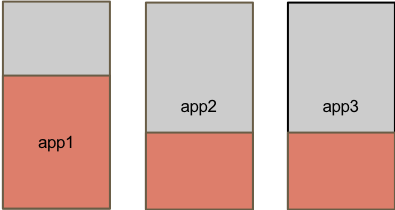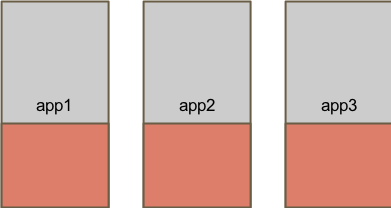Intra-Queue preemption based on user limits
Enabling preemption on a queue based on user limits ensures that resources are uniformly distributed among all users who submit applications to the particular queue.
Example of resource consumption on a queue without preemption
Consider a queue qA with root.qA.capacity configured at 100% and
minimum-user-limit-percent configured at 33%. This implies that
the first three users submitting applications to the queue can each use a minimum of
33% of the queue's resources. If the three users are already consuming the queue's
resources as specified, then any additional user must wait for resources to be
allocated before submitting applications.
- The user u1 submits an application app1 with priority p1. Because no other application is running on the queue, app1 uses a majority of the resources available on the queue.
- Shortly after app1 starts running, users u2 and u3 respectively submit
applications app2 and app3 around the same time with priority p1. In this
situation, app2 and app3 use the resources that remain on the queue.
If preemption is not enabled on the queue, app2 and app3 cannot consume their share of resources on the queue in spite of having the same priority as app1.
| Application | Users | Consumed Resources | Pending Resources |
|---|---|---|---|
| app1 | u1 | 60 | 30 |
| app2 | u2 | 20 | 25 |
| app3 | u3 | 20 | 25 |

Example of resource consumption on a queue with preemption
Consider the same queue and applications with priorities as the previous example.
If preemption based on user limits is enabled on the queue, resources are preempted from app1 for app2 and app3 to run.
| Application | Priority | Preempted Resources | Consumed Resources | Pending Resources |
|---|---|---|---|---|
| app1 | u1 | 26 | 34 | 56 |
| app2 | u2 | 0 | 33 | 12 |
| app3 | u3 | 0 | 33 | 12 |

